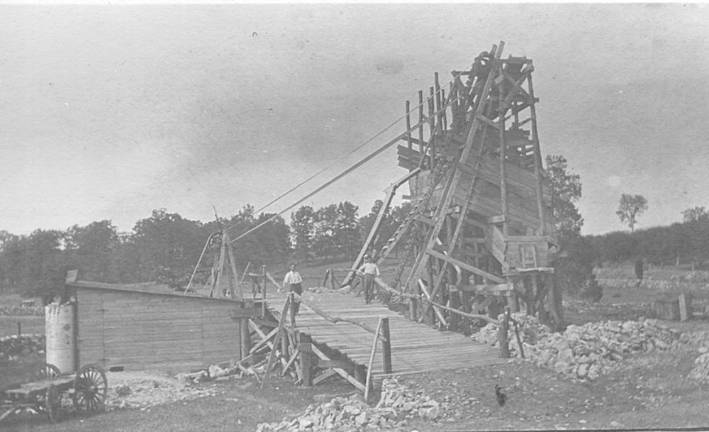
That slow poke. Let me hit my horn! I’ll teach him. Wait, what idiot is pressing my bumper from behind?
While we all get stuck in traffic these days on the many roads in the county, there is a rich heritage and value in the roads and paths that extend through our homeland.
In a broad sense, we follow what has come before.
After the last Ice Age, the landscape had changed in many ways -mountains of stone, many hills of sandy eskers containing the remnants of the frozen ice along with erratics (large stones displaced in the movement). Trapped water had to find a way to the Atlantic Ocean so streams and rivers became embedded in the county.
Many times, the First Peoples followed these easier courses of travel, making paths from summer homes to hunting grounds and winter havens.
As settlers came, they also followed these worn and true practical paths.
After the Revolutionary War, many immigrants and colonists desired to work westward. And there is always commerce and the need to get goods from here to there.
Old Mine Road, running along the Delaware River in Sussex County, is considered among the oldest continuously used roads in the United States.
This road was probably an existing Lenape trail. The Lenape had an encampment on nearby Minisink Island, where a bounty of artifacts have been recovered confirming their existence.
Early Dutch explorers used this path to find copper in the Pahaquarry area. John Adams traveled it from Massachusetts on the way to the Continental Congress in Philadelphia.
There’s the old Military Road from near Newton to the Van Campen area along the Delaware River that was used during the time of the French and Indian War.
The new nation needed to have routes to travel. Similar to other states, the New Jersey Legislature allowed turnpikes to be built. This was a win-win situation where roads would be made, and done so according to some engineered plans; woods would be cut and landowners repaid through the pikes that they would raise to allow wagons to pass if they paid the toll. A couple toll houses remain, one in Hamburg.
Several hundred turnpikes were authorized in our state in the early 1800s. The tree most known to us are Union Turnpike, which goes through Sparta; Morris Turnpike; and Paterson Hamburg Turnpike.
Other, shorter ones were the Zinc Mines Plank Road to Dover in the 1850s; Pochuck Turnpike from McAfee to Hamburg; and Vernon Turnpike, which is part of today’s Route 94.
These roads really opened up the newly formed nation to transportation and movement of commerce and national expansion.
Technology and progress also took place in other modes of transportation with the advent of the Morris Canal and the railroads. In the early 1870s, the stagecoach era came to an end, and operators from Newton through Deckertown and to Paterson ceased to exist.
Roughly a hundred years later, automobiles came into play and roads became paved. One can see more or less the same, with concrete and blacktop roads and the interstate since the 1950s.
A Sunday drive in Sussex County can reveal a lot of our past, literally history hidden in layers on our roads: blacktop over planks over sandy turnpikes over beaten dirt over a primitive Lenape hunting path near a stream or river etched out during the last Ice Age 20,000 years ago.
Bill Truran, Sussex County Historian